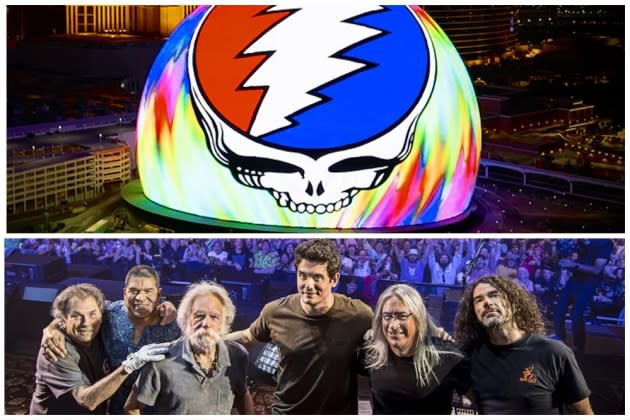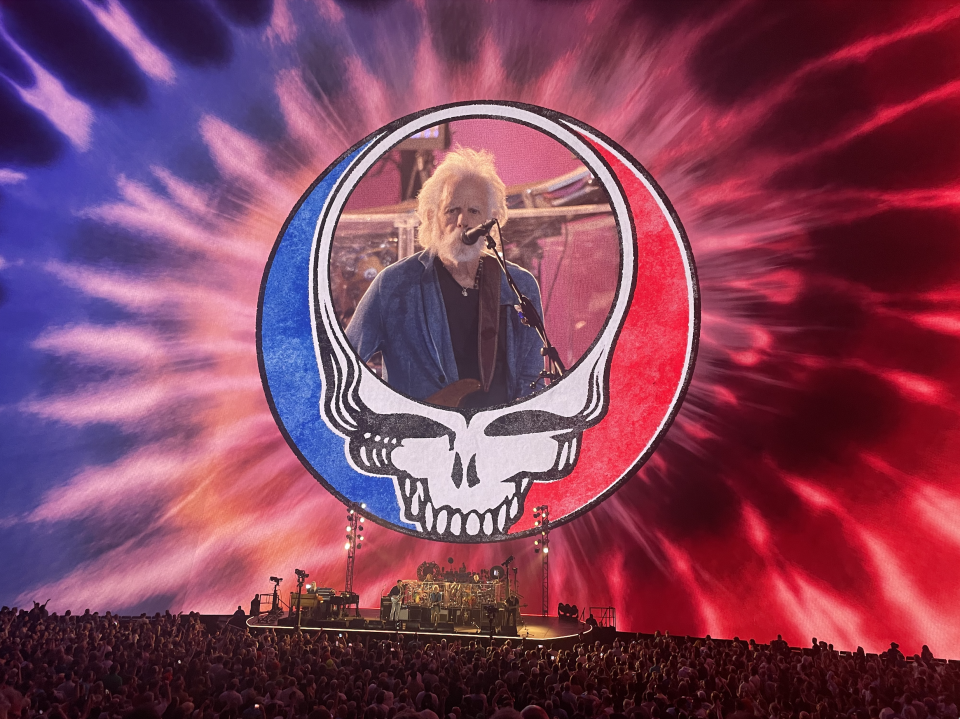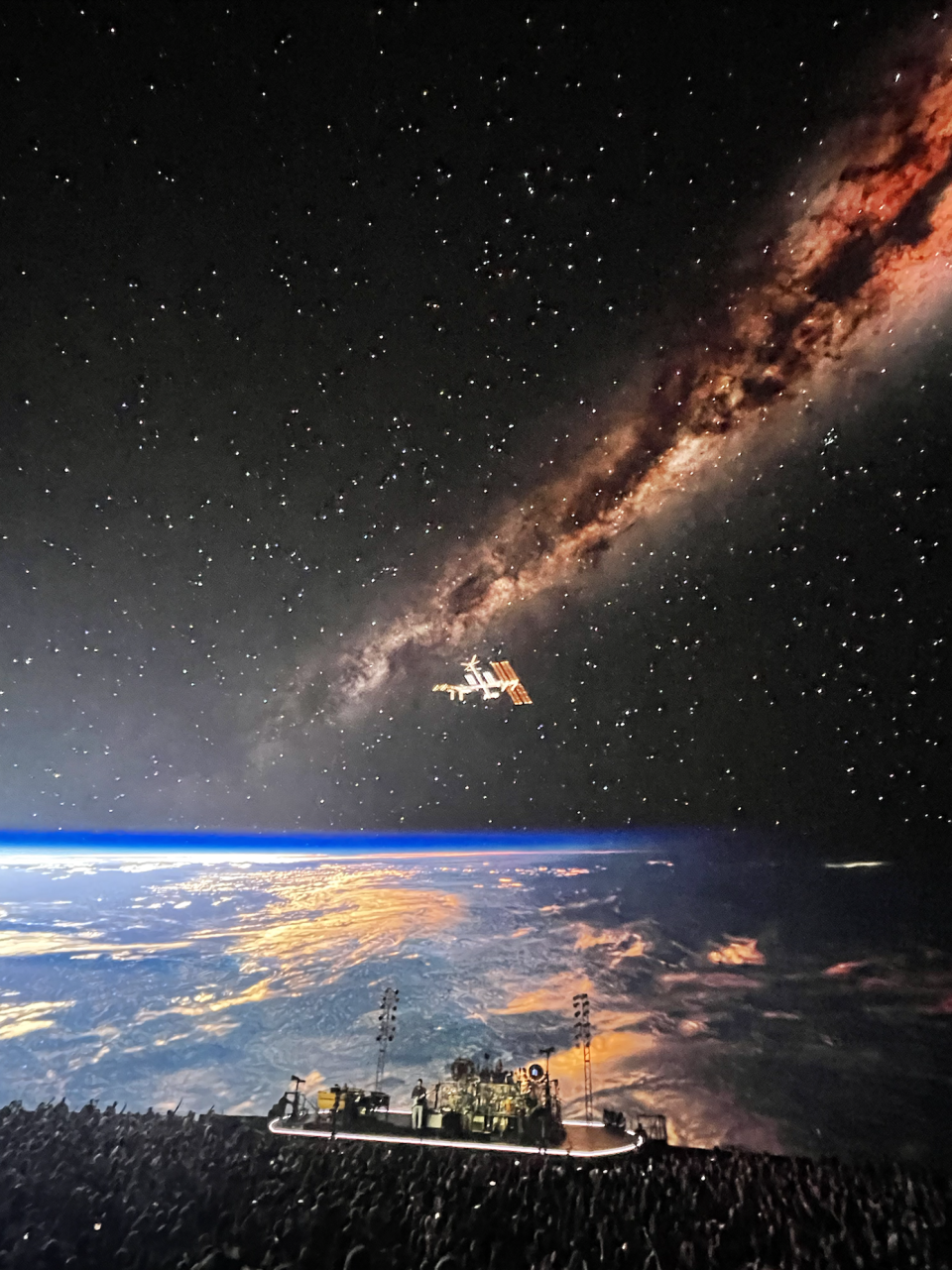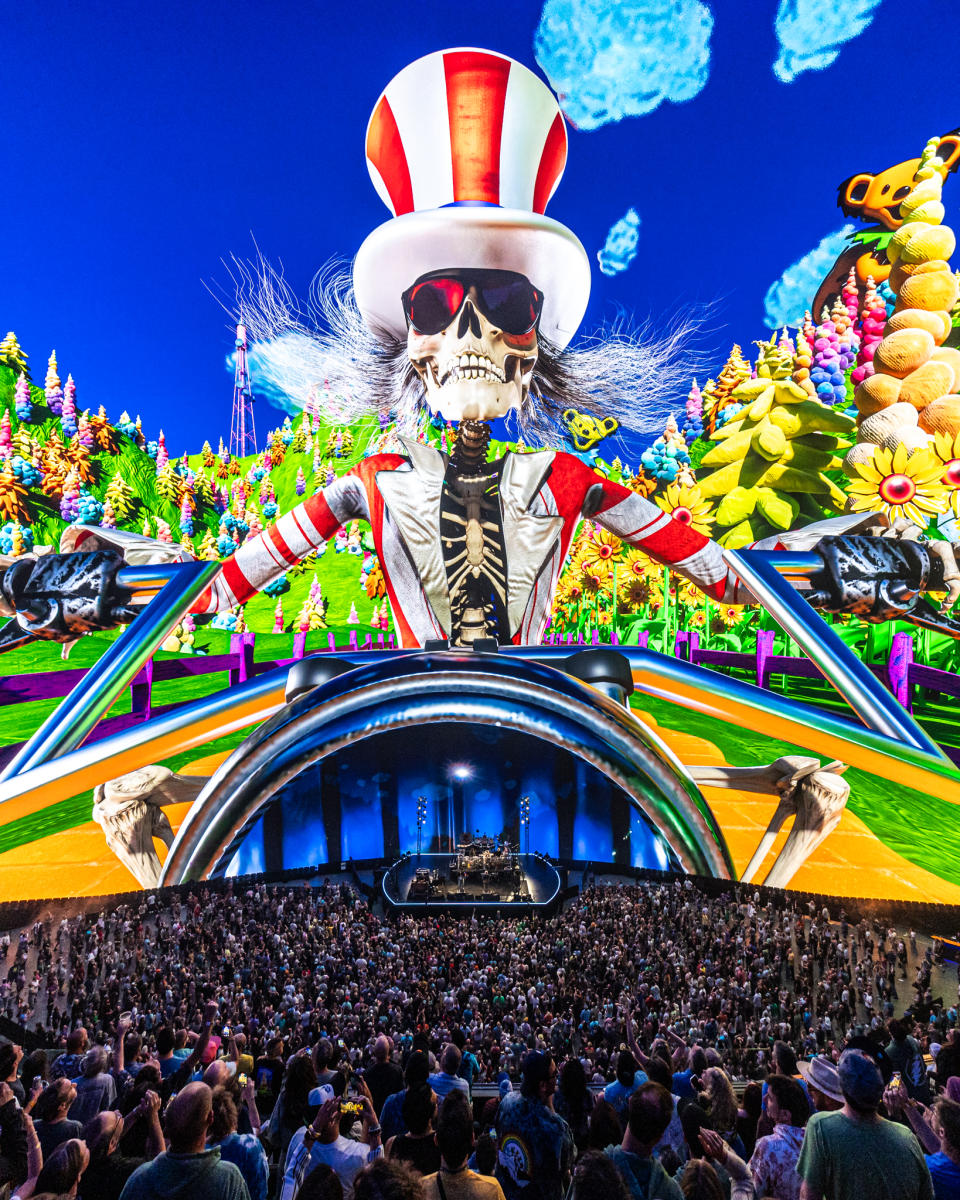Bob Weir Says Dead & Company at Sphere Is ‘Like Opera,’ and He Hopes Band Will Return With Even More Mind-Blowing Tech: ‘We’re Only Scratching the Surface Here’ (EXCLUSIVE)

During Dead & Company’s current run of 30 shows at Las Vegas’ Sphere, no one is exercising the gift of gab on stage. As is typical for the Grateful Dead spinoff group, the music does all the talking, for three and a half hours — with additional non-verbal help from the world’s most advanced concert video design on the dome’s wrap-around screen. Although their playing makes it sound like the musicians are enjoying the experience every bit as much as the full houses every weekend, the band members haven’t stepped up to discuss what it’s been like to perform at the revolutionary venue… until now. And as you might expect or hope, they’re all bullish on playing in this particular china shop.
Grateful Dead co-founder Bob Weir and Dead & Company co-frontman John Mayer both spoke with Variety a month into the nearly three-month engagement to share how they’re feeling about the unique combination of music and spectacular visuals. Our conversation with Weir is below, to be shortly followed by a chat with Mayer. (We already spoke with co-founding drummer Mickey Hart; read that earlier interview here.)
More from Variety
The Eagles Announce Las Vegas Sphere Residency for This Fall
Sphere Rescinds Ban on Boastful Bong Dude From Phish Show, Saying Lawyer's Letter Was a Mistake
Other musicians might be coasting off the rave review from critics and Deadheads for the residency, which was recently extended through Aug. 10. But Weir put a lot of focus in our chat on how he thinks there’s still room for growth — and fairly quick growth — in their show’s use of technology. Does that mean Dead & Company, which already did a farewell tour, might not be done playing when this engagement is done? In our interview with Mayer, he said it hasn’t really been discussed yet, but Weir sounds highly optimistic, for his part, saying he “wouldn’t be surprised if we get invited back” — and that he’s up for it, especially if there’s room to advance the audio-visual marriage even further.
From a box-office standpoint as well as a critical one, “Dead & Company: Dear Forever — Live at Sphere” has been a smash. For the first weekend May 16-18, the group reported a box office gross of $13,406,000, from 50,275 tickets sold over those first three nights. Overall, their camp says, shows have averaged about 16,000 patrons a night, which is fairly close to capacity, and brought in an average nightly gross of around $4 million. Even a conservative estimate for the run would see it landing at well over $100 million for these dates. It doesn’t hurt, of course, that true fans want to see as many shows as possible, with extremely different setlists each night — and a few different visuals rotating in and out, too — unlike U2’s initial residency, which stuck close to a standard script.
The following Q&A has been slightly edited for length and clarity. In it, Weir addresses a few points that have been of interest to fans, including whether recordings of the Sphere run are likely to be released, as they have for past Dead & Company shows.
After the farewell tour ended, were you of the mind that any kind of residency offer that came up would have been something to consider, because you still love to perform? Or was it the fact that it was Sphere and a completely novel A/V experience that was the tipping point for you?
It was both, actually. I think that on the last summer tour, we enjoyed playing, and so that (a residency) was kind of in the wind. And then on top of that, Sphere and the storytelling that you can do from that made it impossibly attractive.
Do you see what is happening now with the Sphere residency as part of a continuum with the history of the Dead, since there’ve been important visual components over the decades? Or do you think of this as a completely distinct chapter?
Once again, both. I mean, working from the stage at the Sphere is like opera. The storytelling facility there is really beyond about anything else. Every artist of any tribe is first and foremost a storyteller. And you can’t get this anywhere else right now. The story being told in the visuals is tangentially attached to the story that we’re telling from on stage. And from what I can, from what I can gather, it’s pretty satisfying to the audience.
As we work with these folks, we’re going to try to get more dynamically involved with each other. I think we’re only scratching the surface here.
What more do you think there is to be done if you go on from here?
The technology doesn’t quite yet exist for them to put the visuals completely in time with the music (in a mammoth space)… That’s stuff to do with the drums. They’re generally a little late and all that kind of stuff. But there’s audio technology that keeps right up with the music. And I think what we’re gonna want to do is try to adapt some of that audio technology to the visual technology.
If you go back 50, 60 years to the Acid Tests (Ken Kesey’s visionary events in San Francisco), when they had those overhead projectors and were doing light shows with clear glass plates and oils and all that kind of stuff, they had that stuff dancing in time with the music. And I want to see if we can get that kind of thing happening. And then beyond that, right now they have to load everything up pretty much pre-show, or they have to know what’s coming. I’d love to see the arrangement get much looser and much more interactive — and I think it will, if we take another swing at it.
So as spectacular as this has been for people, you are still thinking about the advancements you could do, to make it more spontaneous, with real-time sorts of changes and visual/creative decisions?
Yeah, I think that’s the next threshold for the next level, for this experience. And I think then it’ll be on to something further and greater.

It sounds like you’re glad you did it and it’s paying off and rewarding for you guys as well as for the audience.
Yeah. I’ve got to say, we had to work at it. The place is seven and a half acres of hard, parabolic, reflective surface, all focused directly back at the stage, which means that you get a slap-back coming to the stage that’s every bit as loud as what’s happening on the stage. So we have to play with in-ears, and we have had to get used to those. Those in-ears are pretty significant earplugs, and you can’t hear anything around them — I mean, I’m deaf when I have them in and they’re not plugged into anything. And then we have to try to keep the slap-back out of our microphones, by hook or by crook. … And we’ve done pretty well. It took some doing, but we figured it was worth it to put in the elbow grease, to get it working for the audience, because that’s what we’re here for.
So do you think this is something you could do again, like, say, coming back next year?
Potentially. I wouldn’t be surprised if we get invited back, and I would certainly make room for that.
When you guys are making set lists now, is there a lot of time spent thinking about which songs might correlate to a certain visual that has to come up in the show?
Oh, believe me, there is! Yes.
Because it doesn’t always feel like they’re specifically tied together. But at certain times, like with the sgement where the Western movie imagery comes up as there are credits that read “Bobby Weir as Ace,” there often seems to be an appropriate pick for that.
Oh yeah, sure. But, you know, I can envision having a color-coded list in front of me. When John (Mayer) is singing the song, it was kind like the way Jerry (Garcia) and I used to do it. While he was singing, I was playing, of course, but I was also busy thinking about what I was gonna do next. I had that song to figure out what I was gonna do next. And then when I was singing, he had that song to figure out what he was gonna do next. I can envision the technology rising to the level — and it’s developing fast — so that by the next time we get a chance to play that place, it’s at level where, while John’s singing a song, I can decide what I’m gonna do next, make that selection, and I’ll have a list of color-coded songs and we may even have a list of backdrop content scenarios that I can make a selection from. First, there’s a list of color-coded songs, starting with what’s, what’s due up in rotation, which is kind of the way Jerry and I used to work, in putting together the entire show, night after night…
So it sounds like, right now, you have to have things a little bit more mapped out than usual, to have the video team prepared, but you could foresee it becoming more improvisational in every aspect…
Now we’re getting the hang of things, getting the lay of the land, and we can put a little bit of thought to marrying technologies and stuff like that so that we can get to where I think we can get. It’ll take a lot of work, but I think we can get there by the time we get to the next phase.
Some of the visuals are very specific to the band or its history, with iconography from the past, be it mascots or recreations of the past and venues you’ve played in. The zoom-out from Haight Ashbury to the cosmos near the beginning of the show, and back at the end, is a highlight for many people. Is there anything that’s part of the visuals that you most enjoy?
I kind of like being in outer space. Makes me feel right at home!

One thing about these shows is that you could close your eyes for the whole show and still get your money’s worth. With your eyes open, maybe you’re getting twice or three times your money’s worth. But these are shows people would still like to have audio recordings of, which people have expected to get from Dead & Company shows in the past… even though there’s no way you could ever properly capture on a video what’s really happening in Sphere.
Well, you know, my thinking on that has been, at least so far, that the whole experience is the whole experience. And there’s a possibility that we might be able to offer a show in VR, those goggles that you wear with headphones. We might do that, but I don’t foresee offering anything less than that. Because we’re kind of playing to the monitor screens we have in front of us. We’re playing to what we can see, and we’ve all had plenty of opportunity to check out those backdrops that are going on behind us and above us. We kind of know what we’re playing to, and we’re playing to that. The overall experience would be lacking, without the backdrop. So the only choice there is to to offer it in those full formats.
Going forward, it sounds like you’re really interested in how the technology can advance for a return to Sphere. It seems like this might have the potential to spoil you for anything more conventional? Could you imagine doing a more traditional residency, too? There has been speculation, anyway, about what the band might do to celebrate the Dead’s 60th anniversary.
We’ll take that as it comes. Right now, really pretty much all I can think about is what I’m up to right now. … You know, a residency might be fun to do — some other kind of residency — just to keep our chops up. Because this band is fun to play with; there’s no getting around it. We’ll just see what comes up.

Best of Variety
Sign up for Variety’s Newsletter. For the latest news, follow us on Facebook, Twitter, and Instagram.


